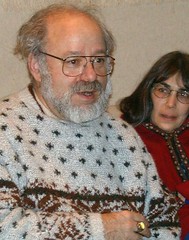
By MARC K. SIEGEL
... abstracted from NU Post letterAs a practicing internist,.... Over the years, I've seen the government shrink reimbursements under first Medicaid and then Medicare -- to the point that, in 2005, I finally decided that I couldn't stay in business unless I stopped taking Medicaid patients, and saw no more than a few Medicare patients each day.
It was costing me more to file the Medicaid paperwork than I got back from the government. I now either charge Medicaid patients a few dollars, or just see them for free.
It's getting tougher to take Medicare patients, too: New drugs and new technologies are wonderful health-care tools -- but keeping current, and making sure to choose the right tool, uses up more and more of my time. Yet Medicare's reimbursement for my efforts keeps on shrinking.
I'm not alone. Each year, I find I have fewer specialists to refer my Medicare patients to. The best mammographer I know no longer accepts Medicare, so I find myself trying to persuade my patients to see her anyway (and pay $300-plus out of pocket) because she's so good.
Nor is this just my impression. The Medicare Payment Advisory Commission reported that 28 percent of Medicare beneficiaries looking for a primary-care physician last year had trouble finding one, up from 24 percent the year before. And a survey last year by the Texas Medical Association found that only 38 percent of primary-care doctors were taking new Medicare patients. Here in New York, less than half the internists affiliated with New York Presbyterian Hospital accept Medicare.
The problem is even worse with Medicaid -- which only half of physicians accept, according to a 2005 Community Tracking Physician survey.
The problem is spreading to private insurers -- who often follow the lead of Medicare and Medicaid. HMOs, in particular, have cut reimbursements to doctors; many of my colleagues have dropped out of HMOS as a result (giving me fewer options of who to refer my patients to).
Recent New York state surveys show doctor participation in HMOs is still far better than for public insurance -- but the dropout rate is 10 percent a year from the state's largest HMO, the Health Insurance Plan of New York, and 14 percent from the also-large Health Net of New York.
The bottom line, I think, is that primary-care physicians fear that near-mindless efforts to find cost savings -- the kind we've seen in existing government programs, and spreading to private plans -- will irrevocably damage our very ability to practice, to prevent and treat illness.
We're told a "public option" will mean insurance for people who now don't pay -- but it seems to me, based on hard experience, that it will mean worse health care for everyone.
Marc K. Siegel is a practicing internist at NYU's Langone Medical Center and a Fox News medical contributor.
This seems to me to be a valid POV.
None of the proposals I have read deal with the problem of cost containment in any already proven way other than a top down, Medicare like system of cuts. Indeed this top down approach is exactly how and why the Canadian or British system has kept their costs down. So the threat is real.
BUT, what exactly is the threat? The docs referred to in the letter have the freedom to choose which payment system to use by NOT accepting patients in one or the other plan. Britain does offer this option. nonetheless, the supply of Britain docs is fine. So, apparently enough doctors will choose to take the government fees.
This seems to em to be the charm of the Obamacare proposal. If we create a government alternative, but keep choice of physician open , we create a market where physicians CAN offer "better" services as long as their prices are not too high.



No comments:
Post a Comment